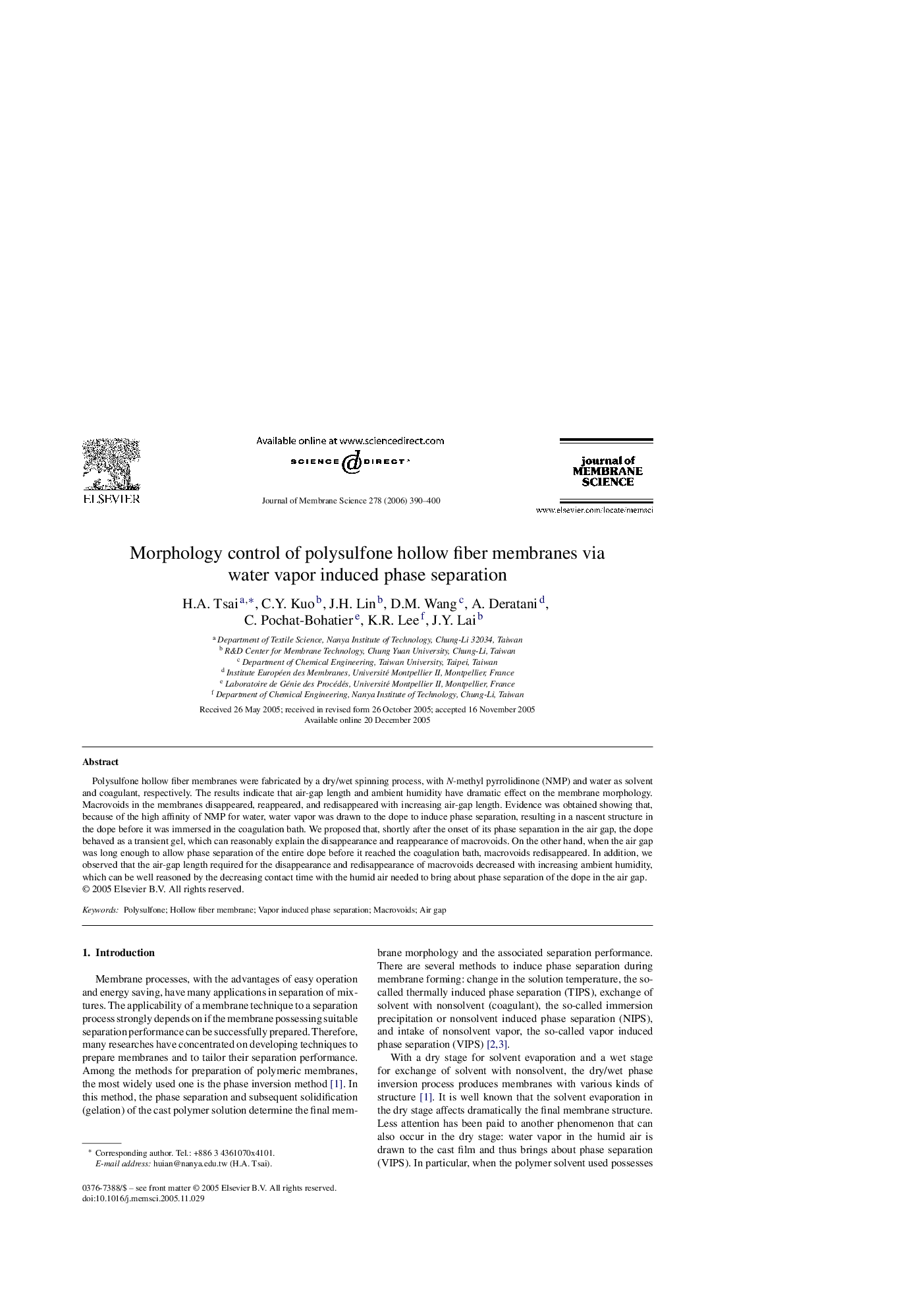| Article ID | Journal | Published Year | Pages | File Type |
|---|---|---|---|---|
| 639564 | Journal of Membrane Science | 2006 | 11 Pages |
Polysulfone hollow fiber membranes were fabricated by a dry/wet spinning process, with N-methyl pyrrolidinone (NMP) and water as solvent and coagulant, respectively. The results indicate that air-gap length and ambient humidity have dramatic effect on the membrane morphology. Macrovoids in the membranes disappeared, reappeared, and redisappeared with increasing air-gap length. Evidence was obtained showing that, because of the high affinity of NMP for water, water vapor was drawn to the dope to induce phase separation, resulting in a nascent structure in the dope before it was immersed in the coagulation bath. We proposed that, shortly after the onset of its phase separation in the air gap, the dope behaved as a transient gel, which can reasonably explain the disappearance and reappearance of macrovoids. On the other hand, when the air gap was long enough to allow phase separation of the entire dope before it reached the coagulation bath, macrovoids redisappeared. In addition, we observed that the air-gap length required for the disappearance and redisappearance of macrovoids decreased with increasing ambient humidity, which can be well reasoned by the decreasing contact time with the humid air needed to bring about phase separation of the dope in the air gap.
